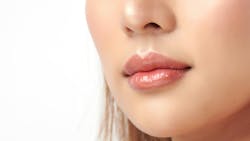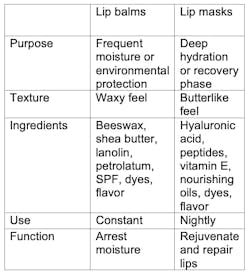Lip masks explained: Benefits, ingredients, and why everyone’s talking about them
Key Highlights
- Lips naturally lose pigment, moisture, and muscle tone over time, with factors like sun exposure and smoking accelerating these changes.
- Lip masks have emerged as a popular cosmetic product, offering deeper hydration and antiaging benefits compared to traditional lip balms.
- When choosing a lip mask, consumers should consider ingredients, texture, packaging type, and personal preferences for optimal results.
Our lips are a body part that often catches the attention of others. Naturally, with time and due to other environmental factors, our lips can change. A trendy new makeup item has been hitting the shelves and the general public’s lips as they try to prevent antiaging signs. This brief article aims to showcase lip masks and why the public wears them. All one must decide is whether they will personally be wearing one as well.
The anatomy of the lips: An overview
The lips are responsible for speech, the ability to eat, sensory functions, and body language. The orbicularis oris muscle controls all these functions. Our lips are composed of an upper and lower lip, which are outlined by the vermilion border and transition from top to bottom with the labial commissures. The upper lip has more stark features, including the vertical groove in the middle known as the philtrum. The lips have sweat glands and hairs on them, although microscopic in size; most people cannot see them with the naked eye.1
What happens to the lips as we age?
As we mature, our lips lose their natural pigment and moisture. Additionally, the muscle can weaken over time. It is entirely normal for anyone to notice changes in their lips with age. However, certain habits like sunbathing and smoking can increase the chances of changes in appearance and put the lips at an increased risk for pathology.1,2
Lip masks versus lip balms
Lip masks have recently emerged on the cosmetic scene as a means for consumers to hydrate their lips with a longer-lasting, more quenching, and more effective moisture uptake. Lip masks should not be confused with lip balms and lipsticks, as they differ in their ingredient composition. Lipsticks and lip balms contain more waxlike ingredients than butters and oils, giving lip masks their phenomenal ability to moisturize the lips. In addition, lip masks may also contain exfoliant and antioxidant properties to make the lips look less aged. Furthermore, lip masks are typically worn during sleep, as it takes awhile for the ingredients to be absorbed by the tissues.1-3
What to consider when purchasing a lip mask
When purchasing a lip mask, consumers must make a few personal choices. Lip masks come in various flavors and sizes, and the price can vary widely. Multiple companies offer lip masks, so the cost can range from as low as $5 to as high as $50, depending on where one decides to purchase their mask. Lip masks are available in container tubs, sheet masks, and tubes; consumers must select the most suitable dispensing mechanism based on their personal preference. In addition, lip masks tend to be offered in traditional flavors that most lip balms come in. Still, around holidays or seasonal changes, lip masks can be introduced with not-so-commonly seen flavors to tempt consumers into trying something new or purchasing the perfect gift for someone. Some lip masks may be stickier than other brands based on the ingredients in the mask.2,3
As consumers increasingly value lip masks, dental professionals may see an increase in patients using them. Lip masks are a fantastic product for anyone who wants to restore moisture to their lips. The lips can become damaged over time due to environmental exposures, so replenishing their moisture and protecting them from sunlight is essential.
Hopefully, after reading this article, individuals will be able to make an informed decision about whether to try a lip mask. If you’re already wearing one, you may be better informed to appreciate the product you are using.
Editor’s note: This article first appeared in Clinical Insights newsletter, a publication of the Endeavor Business Media Dental Group. Read more articles and subscribe.
References
- Shang J, Feng X, Chen Y, Gu Z, Liu Y. Human lip vermilion: physiology and age-related changes. J Cosmet Dermatol. 2024;23(8):2676-2680. doi:10.1111/jocd.16317
- Kaul N, Kohoot E, Drewitt B, et al. Clinical assessment of a lip care product for evaluating performance and increasing attribute expectations in the mask-wearing era. J Am Acad Dermatol. 2022;87(3).
- Dennis R. 11 best lip masks for soft, hydrated lips, according to dermatologists and our editors. CNN Underscored. January 22, 2025. https://www.cnn.com/cnn-underscored/beauty/best-lip-masks
About the Author
Tracee S. Dahm, MS, BSDH, RDH
Tracee S. Dahm, MS, BSDH, RDH, is an adjunct clinical instructor for the North Idaho College School of Dental Hygiene in Coeur d’Alene, Idaho, and she also works in private practice. She has been published in several dental journals, magazines, webinars, and textbooks. Tracee is a key opinion leader on cutting-edge innovations in the hygiene field. Her research interests include trends in dental hygiene, improving access to dental care for the underserved, and mental health. Contact her at [email protected].


